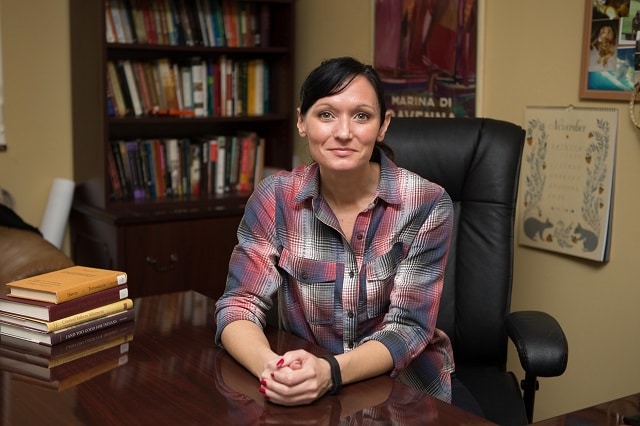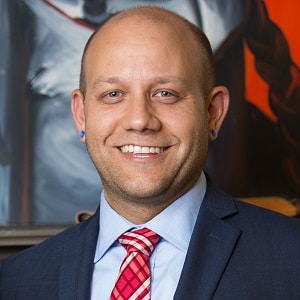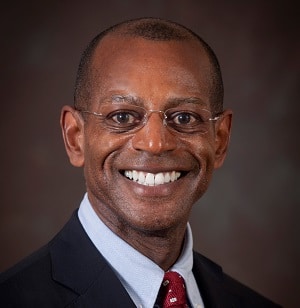
FOR IMMEDIATE RELEASE
BLOOMINGTON, Ind. — In an effort to strengthen the connection to and gain insight from the Native American community, Indiana University is establishing the First Nations Leadership Ambassadors Council.
This initiative will create an ongoing dialogue with IU and a council of six individuals who care deeply about the Native community: Ben Barnes, second chief of the Shawnee Tribe; Glenna Wallace, chief of the Eastern Shawnee Tribe; Nicky Michael, tribal council member of the Delaware Tribe of Indians; Phillip Deloria, professor of American culture and history at the University of Michigan; Richie Meyers, tribal relations director for South Dakota State University; and Kelli Mosteller, director and tribal historic preservation officer of the Citizen Potawatomi Nation Cultural Heritage Center.
 The council will advise the university on issues such as helping IU recruit and retain more Native students and faculty, increasing scholarship and financial aid opportunities for Native students, and providing services that help IU form a better connection with the Native community.
The council will advise the university on issues such as helping IU recruit and retain more Native students and faculty, increasing scholarship and financial aid opportunities for Native students, and providing services that help IU form a better connection with the Native community.
“The formation of the IU First Nations Leadership Ambassadors Council is a step toward not only improving the interaction between Indiana University and the Native community but creating an environment in which Native students and faculty can thrive,” said James Wimbush, IU vice president for diversity, equity and multicultural affairs and dean of the University Graduate School. “The distinguished individuals on the council have deep ties to the Native community, and their knowledge will greatly benefit IU as the university tries to better support Native students and faculty on IU’s campuses.”
The IU First Nations Leadership Ambassadors Council will first meet with IU officials April 6 and 7, before IU Bloomington’s annual Traditional Powwow. The Powwow will take place at 11 a.m. Saturday, April 8, in Dunn Meadow and is sponsored by the First Nations Educational and Cultural Center, a program administered by the Office of the Vice President for Diversity, Equity and Multicultural Affairs.
“I hope this council will increase a Native voice at Indiana University,” Barnes said. “Since Indiana is named after Native people, I would like to see a stronger Native presence at IU. I would like to see more Native students, particularly from the tribes that were removed from Indiana.”
Barnes, who participated in a 2015 summer fellowship at IU through the Advanced Institute for Research, cited IU institutions such as the Archive of Traditional Music, the Lilly Library, the Mathers Museum and the Glenn A. Black Laboratory — specifically the James H. Kellar Library and the Erminie Wheeler-Voegelin Archives — as providing the Native community with research opportunities that aren’t readily available elsewhere.
 “I’d like to see more Native faculty, but also more Native students in particular, take advantage of certain departments that are just not available in the states we were removed to, like Oklahoma,” Barnes said. “But it would make me really excited to see somebody else carry that torch, to see young minds come into contact with that material, come up with new research questions and develop real research outcomes that are beneficial to their home communities.
“I’d like to see more Native faculty, but also more Native students in particular, take advantage of certain departments that are just not available in the states we were removed to, like Oklahoma,” Barnes said. “But it would make me really excited to see somebody else carry that torch, to see young minds come into contact with that material, come up with new research questions and develop real research outcomes that are beneficial to their home communities.
“Not only would I like to see tribal students and, of course, more Native faculty at Indiana University, but I would also like to see tribal nations engaging more with IU because it’s uniquely positioned to provide questions that our communities would like to answer for ourselves and have collaborators on.”
Nicky Belle, director of the First Nations Educational and Cultural Center, believes the council will have a positive influence on the relationship between IU and Native communities.
“The people who have been invited to serve on the First Nations Leadership Ambassadors Council have an incredible amount of wisdom and experience that can help guide IU to better serve Nat
ive students and faculty, and improve and streamline interaction between tribal communities and the university,” Belle said. “IU is committed to recruiting and retaining an increasing amount of Native students and faculty, and with the resources and research opportunities available at the university, I’m very optimistic about the future. I am particularly happy to see how IU is working to reconnect with the people who have historic ties to this land.”
The council will discuss issues such as financial aid and scholarship opportunities for Native students — something that IU junior Keisha Lipscomb expressed support for.
“When I first heard about it, I thought it was a great idea — finally, IU is interacting with people who are aware of Native issues and resources that students need,” said Lipscomb, an elementary education major from Gallup, New Mexico, and a member of the Navajo Nation. She is also a member of IU’s American Indian Student Association and is on the committee of the Traditional Powwow. “I think it’s a good step forward, but I think more outreach, where IU is making more of an advancement and actually trying to reach out to more Native communities, is also necessary.
“It would also be great to have more Native faculty members and more members of the Native community in leadership roles, as well as more financial aid and in-state tuition for Native students coming to IU.”
